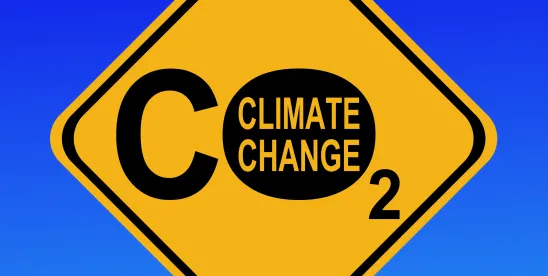The U.S. Environmental Protection Agency (EPA) Region 6 recently issued the first draft Class VI permits in Texas under the Safe Drinking Water Act (SDWA) Underground Injection Control (UIC) program. These draft permits would authorize direct air capture (DAC) for underground injection of captured atmospheric carbon dioxide (CO2) near Odessa, Texas. EPA’s actions mark a significant step towards advancing DAC projects and carbon sequestration efforts in Texas, as well as nationally, and could pave the way for increased carbon credit generation and provide a clearer framework for future DAC project approvals.
What is Direct Air Capture?
DAC is a form of carbon capture and sequestration that pulls carbon dioxide directly out of the atmosphere and permanently injects it into geologic formations. Captured carbon can also be incorporated into new products or used in oil and gas wells as a form of enhanced oil recovery.
How does EPA regulate CO2 storage projects?
Under the Safe Drinking Water Act (SDWA), EPA administers the UIC program. There are two types of UIC wells relevant to underground injection and storage of CO2: Class II and Class VI wells. Class II wells include CO2 associated with oil and natural gas production, including enhanced oil recovery (EOR) wells, while Class VI wells include CO2 injected into deep rock formations for geological sequestration. Underground injection of CO2requires a Class II or Class VI UIC injection permit as applicable. Permitting requirements under the SDWA address project siting, construction, operation, testing, and monitoring, with a focus on the protection of underground sources of drinking water.
States may seek “primacy” for UIC permitting. Recently, EPA tightened its focus on addressing environmental justice (EJ) concerns in connection with Class VI and Class II permitting and state primacy decisions. As part of this focus, EPA has required increased community participation in the permitting process and, for states seeking primacy, an avenue to impose additional mitigation measures to support EJ communities.
At present, Louisiana, North Dakota, and Wyoming have obtained SDWA Class VI permitting primacy. Texas has primacy over the UIC program for other types of wells and has a Class VI permitting primacy application pending before EPA.
How does Texas regulate CO2 storage projects?
As noted, Texas seeks primacy for Class VI permitting within the state. In the meantime, EPA’s Region 6 retains the primary permitting and enforcement responsibility for Class VI wells. The Railroad Commission of Texas has primacy over Class II wells and oversees the geologic storage of CO2 in Texas.
State requirements for Class VI well permits (16 Tex. Admin. Code §5.206) include numerous technical requirements for both the injection and storage areas, including demonstrations that:
(1) the injection and geologic storage of CO2 will not endanger or injure any existing or prospective oil, gas, geothermal, or other mineral resource;
(2) underground sources of drinking water and surface water can be adequately protected;
(3) the injection of anthropogenic CO2 will not endanger or injure human health and safety;
(4) the reservoir into which the anthropogenic CO2 is injected is suitable for or capable of being made suitable for protecting against the escape or migration of anthropogenic CO2 from the storage reservoir;
(5) the geologic storage facility will be sited in an area with suitable geology (with additional defined characteristics) and others.
Who can lease for CO2 storage in Texas?
There is no uniform definition of underground pore space in the United States. Generally, pore space represents the voids within the underground geologic formations where CO2 can be injected for long-term storage. Different jurisdictions may have varied definitions. Texas currently lacks legislation and court precedent defining the extent of pore space ownership. This regulatory uncertainty has hampered investment in CCS projects to a certain extent. In Texas, the current prevailing view is that ownership of the surface includes ownership of the underground pore space. The issue of subsurface versus mineral estate property interest is currently under review by the Texas Supreme Court. Myers-Woodward, LLC v. Underground Services Markham, LLC et al., 2022 WL 2163857 (Tex. App. - Corpus Christi June 16, 2022, pet granted). Oral argument in that case is set for October 29, 2024.
Are there more CO2 storage opportunities in Texas?
In early June 2024, the Texas General Land Office announced a request for proposals to lease over one million acres of state-owned offshore areas for carbon sequestration projects in the Brownsville, Matagorda, Bolivar, Freeport, and Galveston areas.The deadline for submission is October 3, 2024.
Are there incentives for CO2 storage?
The 45Q tax credit provides certain tax credits for carbon capture and storage. The Inflation Reduction Act (IRA) increased the 45Q tax credit for DAC projects from $50 per metric ton to $180 per metric ton of CO2 captured from the atmosphere and sequestered in geological formations, and to $130 per metric ton of CO2 captured and incorporated into new products or sequestered through EOR. The IRA also increased the tax credit for carbon sequestration from industrial facilities or power plants to $85 per metric ton if the carbon is sequestered in geological formations, and to $60 per metric ton if the carbon is incorporated into new products or stored in oil and gas fields. In addition, the IRA substantially lowered the threshold for the amount of carbon that must be captured to be eligible for the tax credits and increased the value of the tax credits by allowing for direct payment and increased transferability of the tax credits.








 />i
/>i

